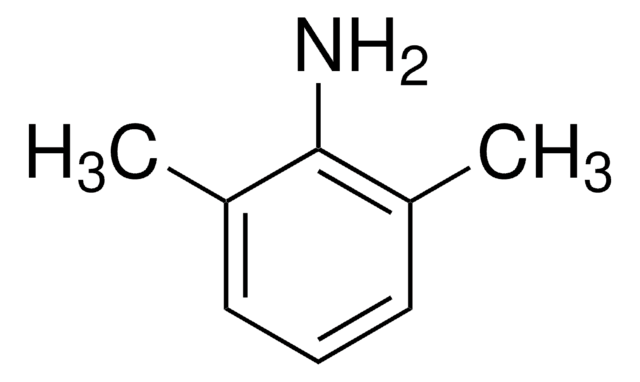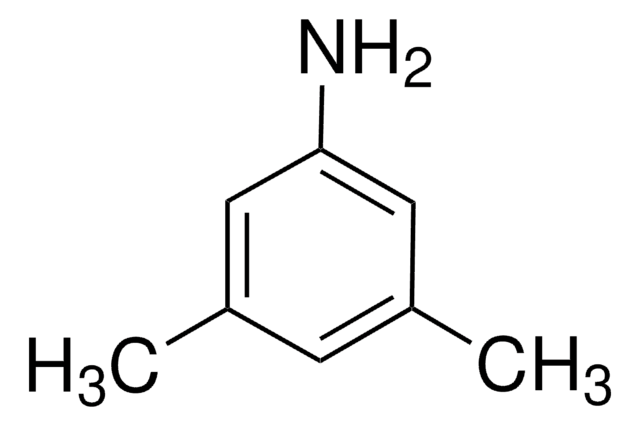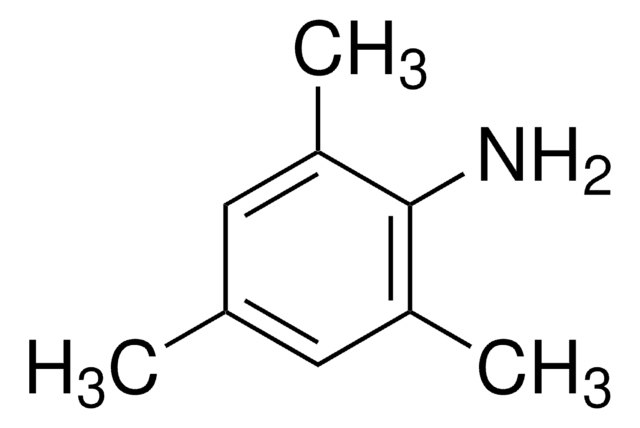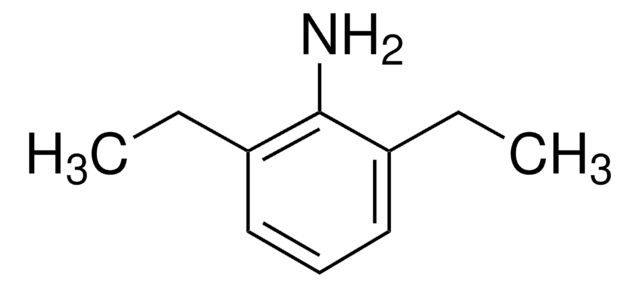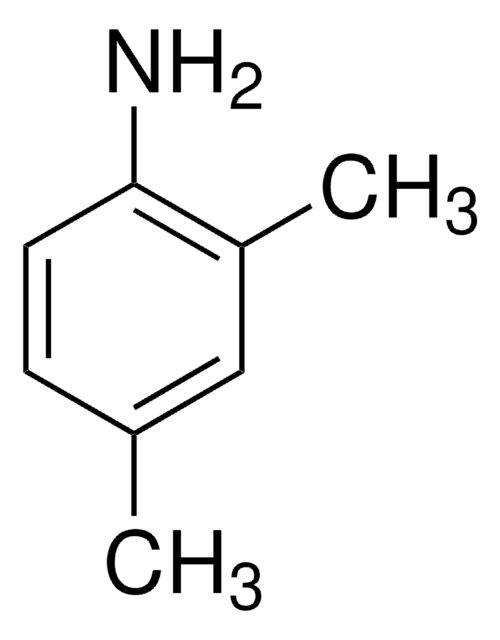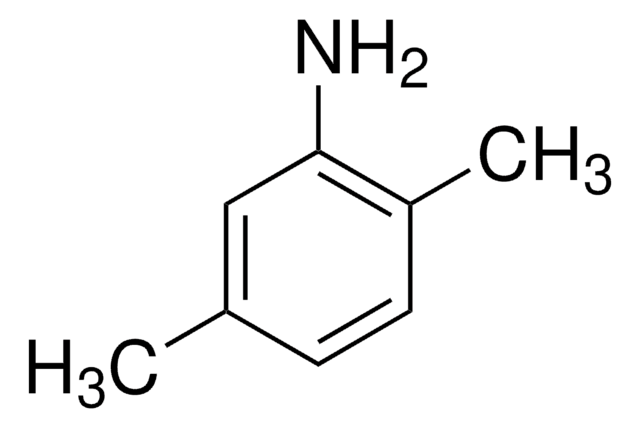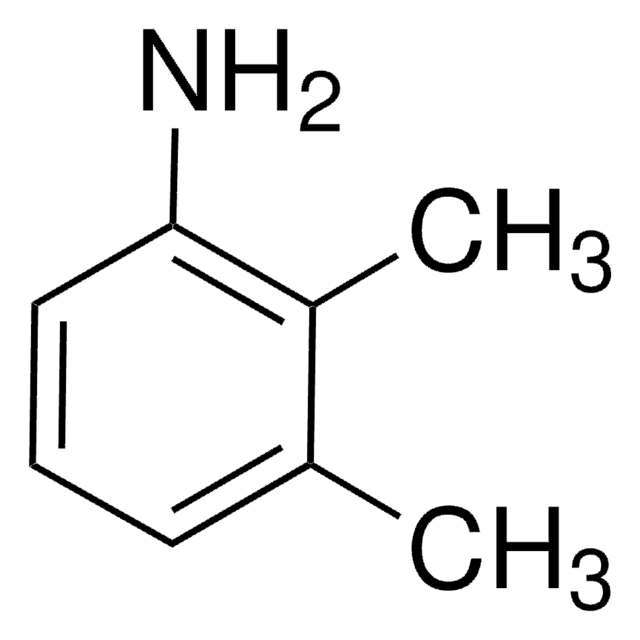Wichtige Dokumente
D146005
2,6-Dimethylanilin
99%
Synonym(e):
2,6-Xylidin, 2-Amino-1,3-dimethylbenzen, 2-Amino-m-xylen
About This Item
Empfohlene Produkte
Dampfdruck
<0.01 mmHg ( 20 °C)
Qualitätsniveau
Assay
99%
Form
liquid
Brechungsindex
n20/D 1.560 (lit.)
bp
214 °C/739 mmHg (lit.)
mp (Schmelzpunkt)
10-12 °C (lit.)
Dichte
0.984 g/mL at 25 °C (lit.)
SMILES String
Cc1cccc(C)c1N
InChI
1S/C8H11N/c1-6-4-3-5-7(2)8(6)9/h3-5H,9H2,1-2H3
InChIKey
UFFBMTHBGFGIHF-UHFFFAOYSA-N
Suchen Sie nach ähnlichen Produkten? Aufrufen Leitfaden zum Produktvergleich
Verwandte Kategorien
Anwendung
- 1-Naphthaldehyde to form an intermediate, bis(4-amino-3,5-dimethylphenyl)naphthylmethane (BADN) to further form bis(4-maleimido-3,5-dimethylphenyl)naphthylmethane (BMDN) by reacting with maleic anhydride, acetic anhydride and sodium acetate.
- n-Butyllithium to form lithium 2,6-dimethylanilide, which can be utilized to form various RhII anilide complexes.
Signalwort
Warning
Gefahreneinstufungen
Acute Tox. 4 Dermal - Acute Tox. 4 Inhalation - Acute Tox. 4 Oral - Aquatic Chronic 2 - Carc. 2 - Eye Irrit. 2 - Skin Irrit. 2 - STOT SE 3
Zielorgane
Respiratory system
Lagerklassenschlüssel
6.1A - Combustible acute toxic Cat. 1 and 2 / very toxic hazardous materials
WGK
WGK 3
Flammpunkt (°F)
195.8 °F - closed cup
Flammpunkt (°C)
91 °C - closed cup
Persönliche Schutzausrüstung
Eyeshields, Faceshields, Gloves, type ABEK (EN14387) respirator filter
Hier finden Sie alle aktuellen Versionen:
Besitzen Sie dieses Produkt bereits?
In der Dokumentenbibliothek finden Sie die Dokumentation zu den Produkten, die Sie kürzlich erworben haben.
Kunden haben sich ebenfalls angesehen
Global Trade Item Number
| SKU | GTIN |
|---|---|
| D146005-10L | |
| D146005-1L | |
| D146005-500G | 4061837512094 |
| D146005-100G | 4061837512070 |
| D146005-250ML | |
| D146005-5G | 4061833559987 |
| D146005-5ML |
Unser Team von Wissenschaftlern verfügt über Erfahrung in allen Forschungsbereichen einschließlich Life Science, Materialwissenschaften, chemischer Synthese, Chromatographie, Analytik und vielen mehr..
Setzen Sie sich mit dem technischen Dienst in Verbindung.